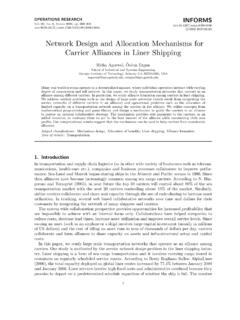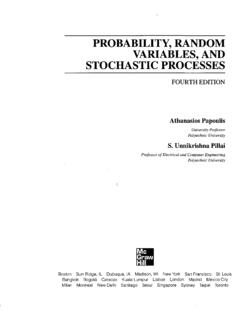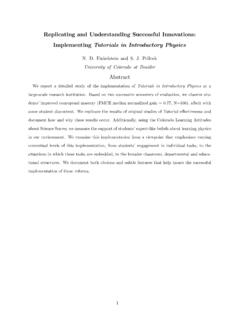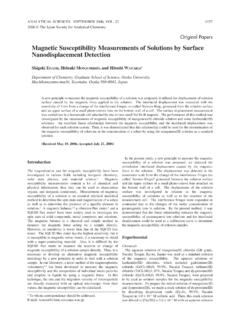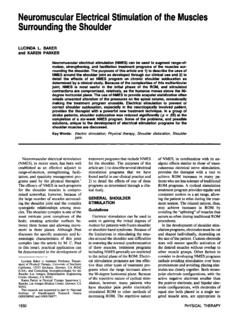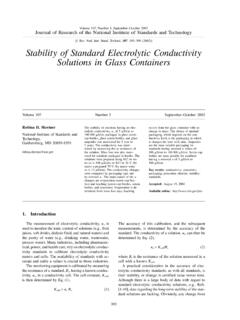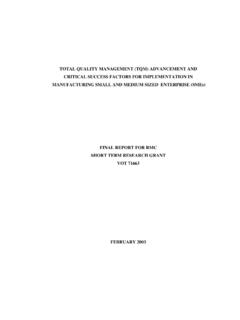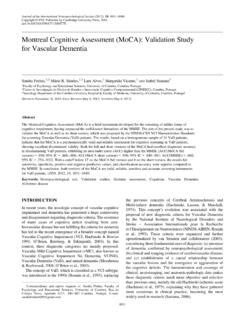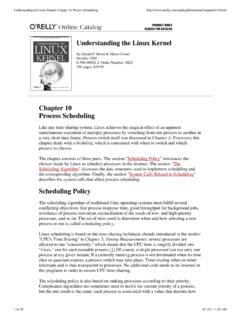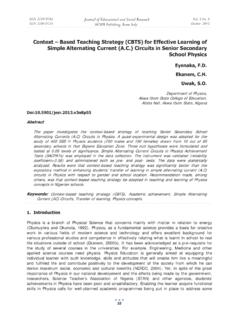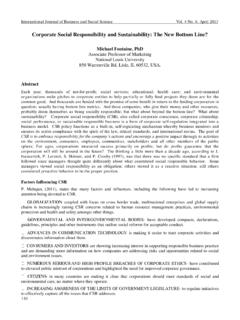Transcription of Triple Bottom Line and Sustainability: A Literature Review
1 Business and Management Studies Vol. 1, No. 2; September 2015 ISSN 2374-5916 E-ISSN 2374-5924 Published by Redfame Publishing URL: 6 Triple Bottom line and sustainability : A Literature Review Hanan Alhaddi Correspondence: Hanan Alhaddi, College of Management, Lawrence Technological University, MI, USA Received: February 2, 2015 Accepted: February 15, 2015 Online Published: April 3, 2015 URL: Abstract Triple Bottom line (TBL) and sustainability are two related constructs that are used interchangeably in the Literature . A comprehensive Review of the relevant Literature was conducted and revealed an inconsistent use of the term sustainability . On the other hand, consistency in terms of referring to the three lines simultaneously is built into the structure of TBL as the construct is explicitly based on the integration of the social, environmental, and economic lines.
2 The purpose of this paper is not to support an argument that favors the use of one term over the other, but to provide an overview of the presence of both terms in the Literature . In light of that, researchers in the business, management, and sustainability fields are encouraged to pay particular attention to how they use these terms in their studies. Keywords: Triple Bottom line (TBL), sustainability , Literature Review comma 1. Introduction Triple Bottom line (TBL) is a sustainability -related construct that was coined by Elkington (1997). The origin of sustainability may date back to over 130 years ago from an idea known as spaceship earth (George, 1879/2009). Evolving over the years, the construct gained significant popularity with the emergence of the term sustainable development from the Brundtland Report in 1987.
3 The report defined the term as the development that meets the needs of the present generations without compromising the ability of the future generations to meet their own needs (Brundtland, 1987, p 43). Driven by sustainability , TBL provides a framework for measuring the performance of the business and the success of the organization using three lines: economic, social, and environmental (Goel, 2010). In essence, TBL expresses the expansion of the environmental agenda in a way that integrates the economic and social lines (Elkington, 1997). In his definition of TBL, Elkington used the terms profit, people, and the planet as the three lines. In this study, the economic, social, and environmental lines referred to profit, people, and planet respectively.
4 Consistency in terms of referring to the three lines simultaneously is built into the structure of TBL as the construct is explicitly based on the integration of the social, environmental, and economic lines. Different than TBL, Literature reviewed showed inconsistent usage of the sustainability term. For example, some studies used sustainability to primarily refer to the environmental line (Yan, Chen, & Chang, 2009). Others used the term to refer to the social line (Bibri, 2008), while some used the term to refer to all three (Marcus & Fremeth, 2009). In regards to balance, TBL places an equal level of importance on each of the three lines; this brings more balance and coherence into the construct (Elkington, 1997; Epstein, 2008; Harmon, Bucy, Nickbarg, Rao, & Wirtenberg, 2009; Russell, Abdul-Ali, Friend, & Lipsky, 2009; Savitz & Weber, 2006).
5 Other sustainability -related studies showed an imbalance in the level of importance distributed among the three lines. For example, although many studies included the economic line when referring to sustainability , the notion of its importance was limited (Collins, Steg, & Konan, 2007). 2. Literature Review Method The Literature Review presented in this paper was part of a larger Review conducted by Alhaddi (2013). The consensus in the research is that TBL is a sustainability -related construct. Research has also shown that TBL is a consistent construct in terms of always referencing the economic, social, and environmental lines (Elkington, 1997). Consistency is built into the structure of TBL as the construct is explicitly based on the integration of the three lines.
6 Additionally, TBL places an equal amount of emphasis on each of the three lines, which brings more balance and coherence into the construct (Elkington, 1997; Epstein, 2008; Harmon, Bucy, Nickbarg, Rao, & Wirtenberg, 2009; Russell, Abdul-Ali, Friend, & Lipsky, 2009; Savitz & Weber, 2006). On the other hand, the Literature reviewed showed a large number of sustainability studies where the study topic was sustainability , yet the ultimate focus was on either the environment or society. Therefore, a thorough Review of the relevant Literature was conducted to understand how each concept appeared in research. The purpose of the Literature Review was not to support an argument of TBL versus sustainability , but to Business and Management Studies Vol.
7 1, No. 2, 2015 7 shed light on how they appear in Literature . This paper presents an overview of sustainability , followed by TBL, then concluded with few recommendations for researchers in the business, management, and sustainability fields. 3. sustainability Similar to the definition of sustainable development in the Brundtland report, Hart and Milsten (2003) defined sustainability as the expectations of improving the social and environmental performance of the present generation without comprising the ability of future generations to meet their social and environmental needs. Herman Daly s measurement-based definition of the term brought more environmental precision to the construct: A sustainable society needs to meet three conditions: its rates of use of renewable resources should not exceed their rates of regeneration; its rates of use of non-renewable resources should not exceed the rate at which sustainable renewable substitutes are developed; and its rates of pollution of emission should not exceed the assimilative capacity of the environment.
8 (Elkington, 1997, p. 55) Despite the evolution of the sustainability construct, the essence of the idea remained the same; it was still an issue of needs weighed against limitations. Continuing to emerge from the spaceship earth idea and others like sustainable society (Santos & Filho, 2005), the authors pointed out the consensus of these ideas with respect to society and the need for it to be in balance with its surroundings. Further, sustainability was referred to as a fundamental and complex construct that mandates the balance of several factors in order for the planet to continually exist (Aras & Crowther, 2009). Yet, in its simplest form, sustainability refers to a value and a belief of the enhancement and preservation of the natural environment (Shrivastava & Hart, 1992).
9 Originated decades ago and through the significant momentum gained with the Brundtland Report (1987), the construct continued to gain attention becoming one of the most leading issues facing the world due to continuous pressure from the society and the stakeholders (Ambec & Lanoie, 2008; Epstein, 2008; Lippman, 2010). Several definitions of sustainability were found in the Literature ; although they differed slightly based on the source, the core (with respect to the society and the environment) remained the same. For example, according to Dyllick and Hockerts (2002), sustainability represents the societal development and evolution in the direction of a wealthy and more comfortable world where the natural environment and cultural accomplishments are reserved for future generations.
10 In addition to benefiting future generations, sustainability delivers value and financial gains in the present. sustainability in the Literature The lack of a rigid framework for sustainability , presented a unique challenge in the Literature : the use of the term sustainability seemed not to be consistent. Some sustainability studies discussed one line only (Bibri, 2008; Blengini & Shields, 2010; Iles, 2008; McDonald & Oates, 2006; Yan, Chen, & Chang, 2008). Other studies combined two or more lines (Collins, Steg, & Koning, 2007; Dewangga, Goldsmith, & Pegram, 2008; Frame & Newton, 2007; Kirchgeorg & Winn, 2006). Only a handful of studies referred included the economic line whether independently or in conjunction with the other two lines (Collins, Steg, & Koning, 2007; Kirchgeorg & Winn, 2006).
